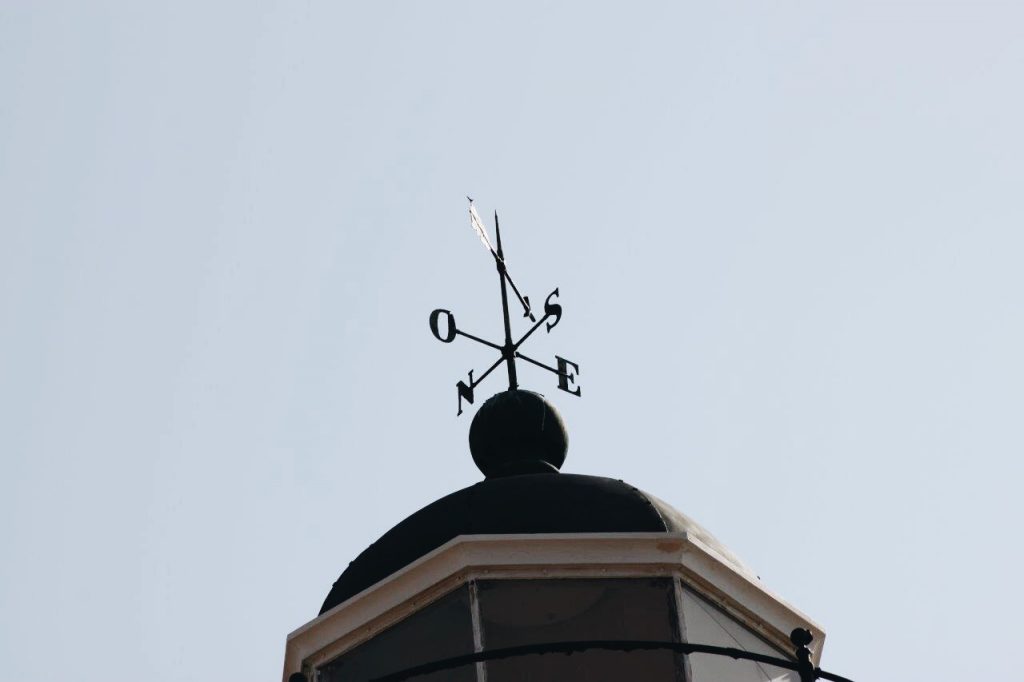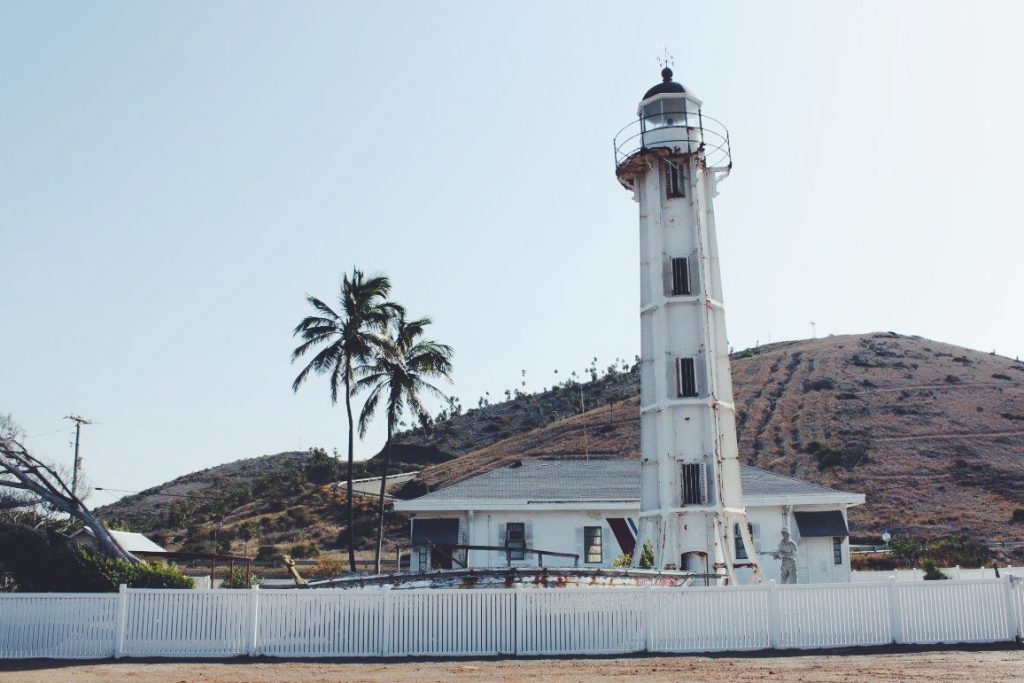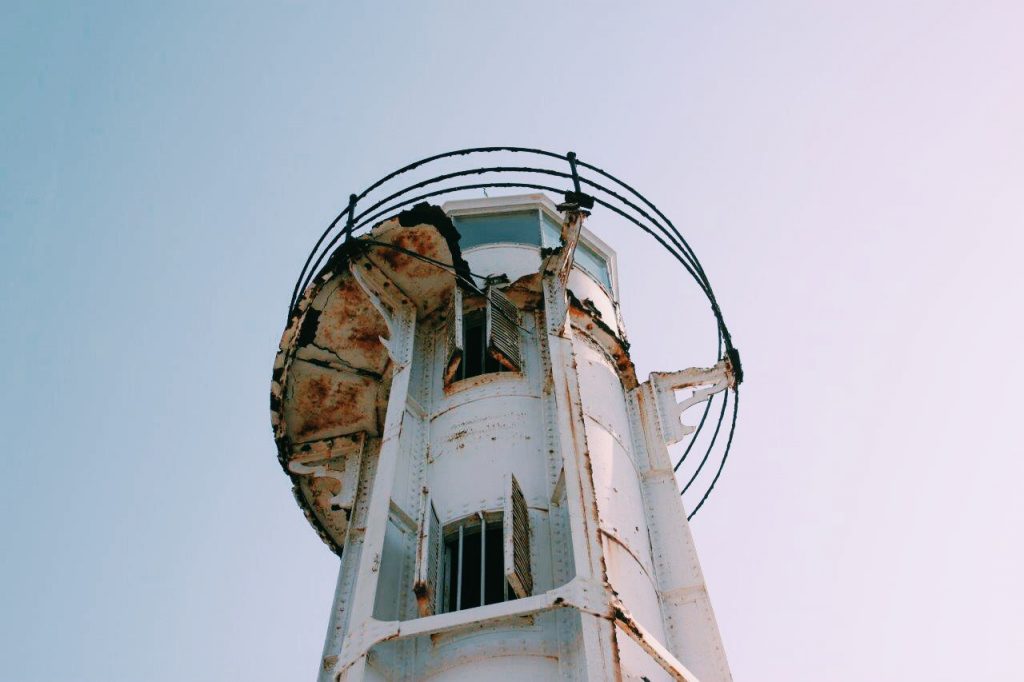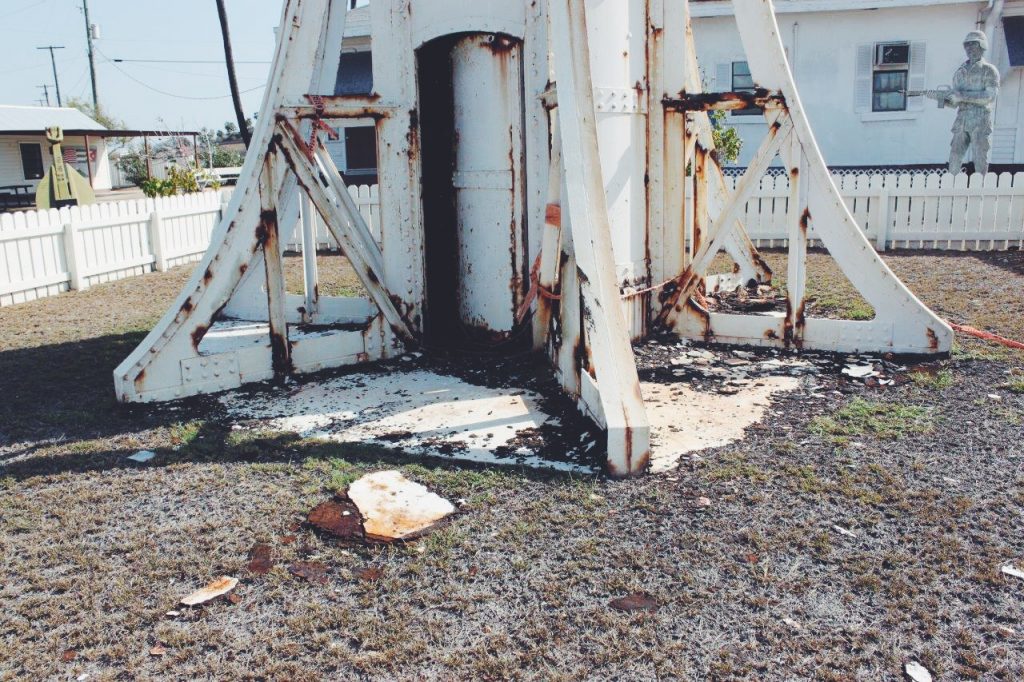
The weather vane bears an “N” for north, an “S” for south, an “E” for east, and an “O” for oeste (the Spanish word for “west”) (A.Thomas).
The lighthouse at Guantanamo Bay, Cuba is labeled as Facility 831.
Built on a circular plan, the cast-iron lighthouse was constructed in 1903. The tower is 60 feet tall. The original lamps were whale oil lamps that were used until the 1920s when they were replaced by electric lights. In the mid-1960s the lens, prisms, and the mechanism for making the light revolve were removed and put on display at the U.S. Coast Guard Academy in New London, Connecticut. Structural features are steel panels and six steel support braces, window bays with steel security bars, steel louvered storm shutters, a molded copper cupola and weather vane, and a tongue-and-groove mahogany interior. The lighthouse is five stories and has a steel frame. According to base historians at Guantanamo Bay, the lighthouse was constructed in New York and shipped in parts to the island.
The roof is a molded copper cupola and with a copper weather vane. The cupola is molded copper, as is the weather vane. The weather vane bears an “N” for north, an “S” for south, an “E” for east, and an “O” for oeste (the Spanish word for “west”). The windows are steel security bars and steel louvered shutters. The only door is steel, as is the walkway. There is a significant amount of deterioration in the form of rust and structural damage on all elevations, as well as the walkway and its railing.
According to the U.S. Coast Guard, the use of cast iron in lighthouse construction began in the late 1830s or early 1840s. The perceived advantages were that it was light compared to brick or stone, inexpensive, strong, water tight, and had a slow rate of deterioration. They were more adaptable to coastal areas where a relatively light pile structure was required due to mud, sand, swamp, or coral. Another example of cast-iron lighthouses is Brandywine Shoals off the coast of Delaware.



